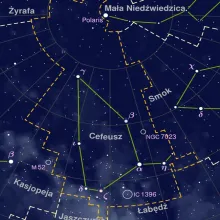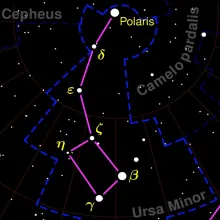Constellation Cepheus
Cepheus is a northern constellation named after the mythological King Cepheus of Aethiopia. It is one of the 48 constellations listed by the Greek astronomer Ptolemy in the 2nd century and remains one of the 88 modern constellations recognized today. Though not as prominent as nearby constellations like Cassiopeia, Cepheus is still an important part of the night sky, especially for those interested in ancient mythology and celestial navigation.









